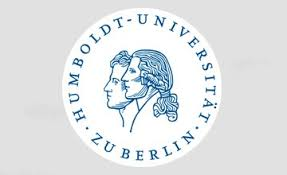Kursbeschreibung
Die Vorlesung beschäftigt sich mit Mathematischer Relativitätstheorie, Elektrodynamik und Yang-Mills-Theorien. In der Relativitätstheorie
werden die geometrischen Eigenschaften von Raum und Zeit durch ein einziges Objekt, eine Lorentzsche Mannigfaltigkeit, beschrieben.
Der Unterschied zu einer Riemannschen Mannigfaltigkeit ist, dass die Bilinearform nicht mehr positiv-definit ist, sondern von Signatur (1,n-1).
Auf diesen Mannigfaltigkeiten werden die physikalischen Feldgleichungen z.B. der Elektrodynamik beschrieben. Diese haben die Form von Yang-Mills-Theorien,
die eine interessante Anwendung der Theorie der Prinzipalbündel darstellen. Schlussendlich wird dann auch die Metrik zu einer dynamischen Variable,
die bestimmten Feldgleichungen, den Einstein-Gleichungen, folgt. Die Vorlesung wird folgendermaßen gegliedert sein:
1. Grundlegendes über Lorentzmannigfaltigkeiten und Kausalität
2. Cauchyflächen, Zeitfunktionen, analytische Bedeutung für symmetrisch-hyperbolische Systeme, Yang-Mills-Theorien
3. Geodätische: Existenz einer maximalen Geodätischen für kausal relationierte Punkte, Limit Curve Lemma, Beispiele für (Un-)Vollständigkeit und Maximalität
4. Die Schwarzschild-Raumzeit, ihre Erweiterungen und ihre Eindeutigkeit (Birkhoff-Theorem)
5. Energiebedingungen für Materiemodelle und Singularitätentheoreme
Erforderliche Vorkenntnisse: Lineare Algebra I-II, Analysis I-IV, Differentialgeometrie I.
Das Skript zur Vorlesung wird wöchentlich aktualisiert und ist hier zu finden.
Kriterien zur Erlangung der 5LP: Bestehen der Klausur. Es wird jedoch dringend empfohlen, dass die Teilnehmer regelmäßig die Übungsaufgaben lösen; diese werden auf Anfrage vom Dozenten korrigiert. Zusätzliche Präsenzaufgaben werden in den Übungen bearbeitet werden.
Zeit und Ort der Erstklausur: TBA, Zeit und Ort der Zweitklausur: TBA.
Literatur:
Die folgende Auswahl ist etwas willkürlich, aber jedes der aufgeführten Bücher bietet eine verlässliche Grundlage, die jedoch nicht immer alle in diesem Kurs behandelten Themen abdeckt:
C. Bär, Lorentzgeometrie-Skript, 2006.
J. Beem, P. Ehrlich, K. Easley, Global Lorentzian Geometry, CRC Press, 1996.
A. Besse, Einstein Manifolds, Springer Verlag, 2008, reprint of the 1987 edition.
O'Neill, Semi-Riemannian Geometry with Applications to Relativity, Academic Press, 1983.
Course description
The course gives an introduction to the topic of Lorentzian geometry, mathematical relativity, electrodynamics and Yang-Mills Theories. In the theory of relativity, geometric features of space and time are described by a soingle object: the spacetime. The difference to a Riemannian manifold is the signature (1,n-1) of the used bilinear form, as opposed to the signature (0,n) in the Riemannian case. On such an object, a Lorentzian manifold, the physical field equations of electrodynamics and other fundamental theories can be defined. Many have the form of Yang-Mills theories, which are an interesting application of the theory of principal bundles. In the end, the metric itself is also treated as a dynamical variable subject to the so-called Einstein equations. The course will be structured as follows:
1. Foundations of Lorentzian manifolds and causality
2. Cauchy surfaces, time functions, analytical consequences for symmetric hyperbolic systems, Yang-Mills Theories
3. Geodesics: existence of a maximal geodesic between causally related points, Limit Curve Lemma, Examles for (in)completeness and maximality
4. Schwarzschild spacetime, its extensions and its uniqueness (Birkhoff's Theorem)
5. Energy conditions for matter models and singularity theorems
The script (supplemented every week) you can find here .
Passed exams you will need: Linear Algebra I-II, Analysis I-IV, Differential Geometry I.
Criteria to obtain the 5LP: Passing the written exam at the end of the course. It is however strongly recommended to solve constantly the exercises, which I am going to correct on demand. Additional ex-tempore exercises will be treated in the exercise sessions.
Time and Place of the first exam: TBA, time and place of the second exam: TBA.
Recommended Literature:
The following selection is admittedly a bit arbitrary, but each of the listed books provides a good foundation for most of the topics treated:
C. Bär, Lorentzgeometrie-Skript, 2006, available online.
J. Beem, P. Ehrlich, K. Easley, Global Lorentzian Geometry, CRC Press, 1996.
A. Besse, Einstein Manifolds, Springer Verlag, 2008, reprint of the 1987 edition.
O'Neill, Semi-Riemannian Geometry with Applications to Relativity, Academic Press, 1983.
Übungsaufgaben:
Übungsblatt 1
Übungsblatt 2
Übungsblatt 3
Übungsblatt 4
Übungsblatt 5
Übungsblatt 6
Übungsblatt 7
Übungsblatt 8
Übungsblatt 9
Übungsblatt 10
Übungsblatt 11
Übungsblatt 12
Übungsblatt 13
Übungsblatt 14
